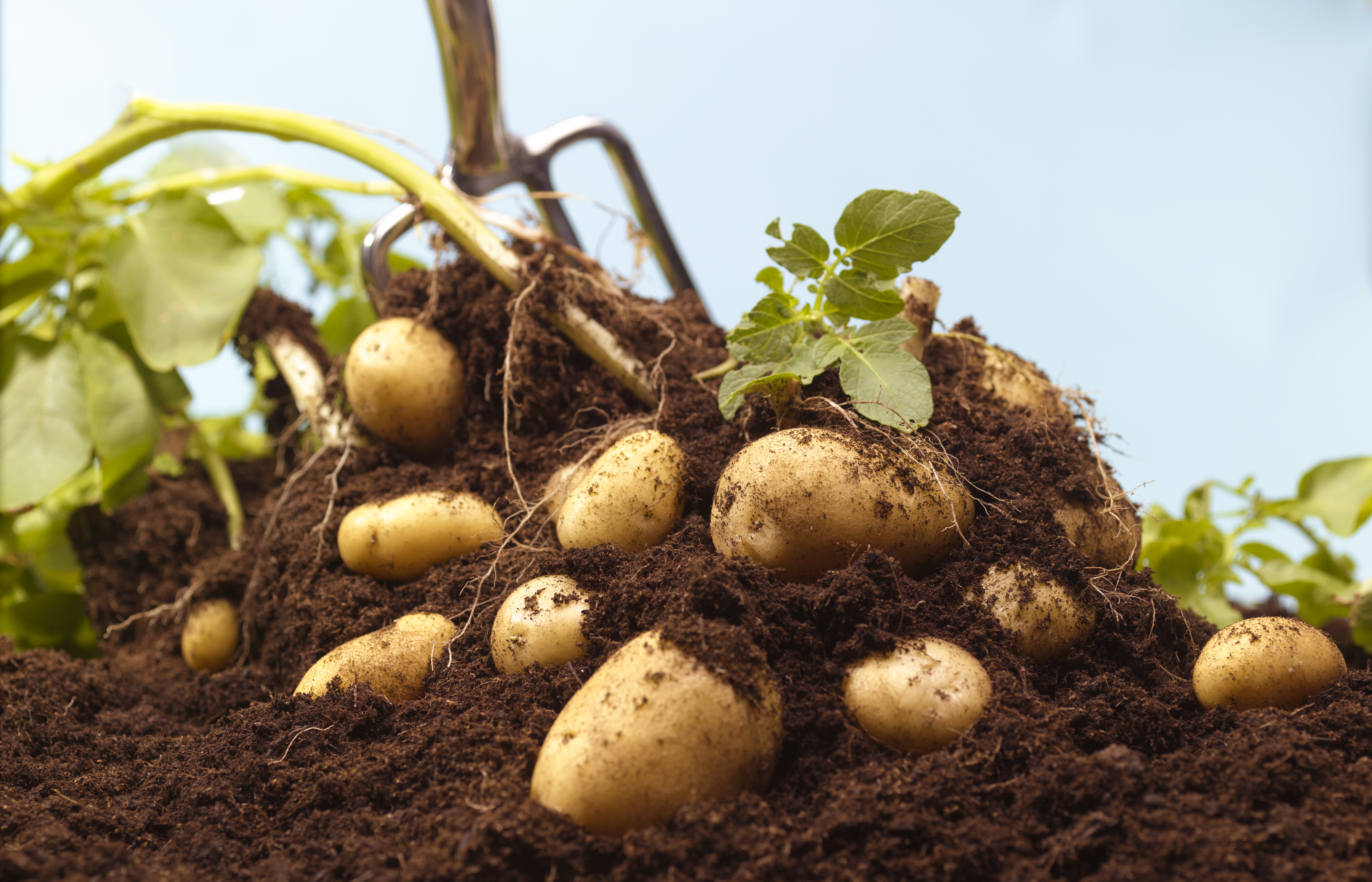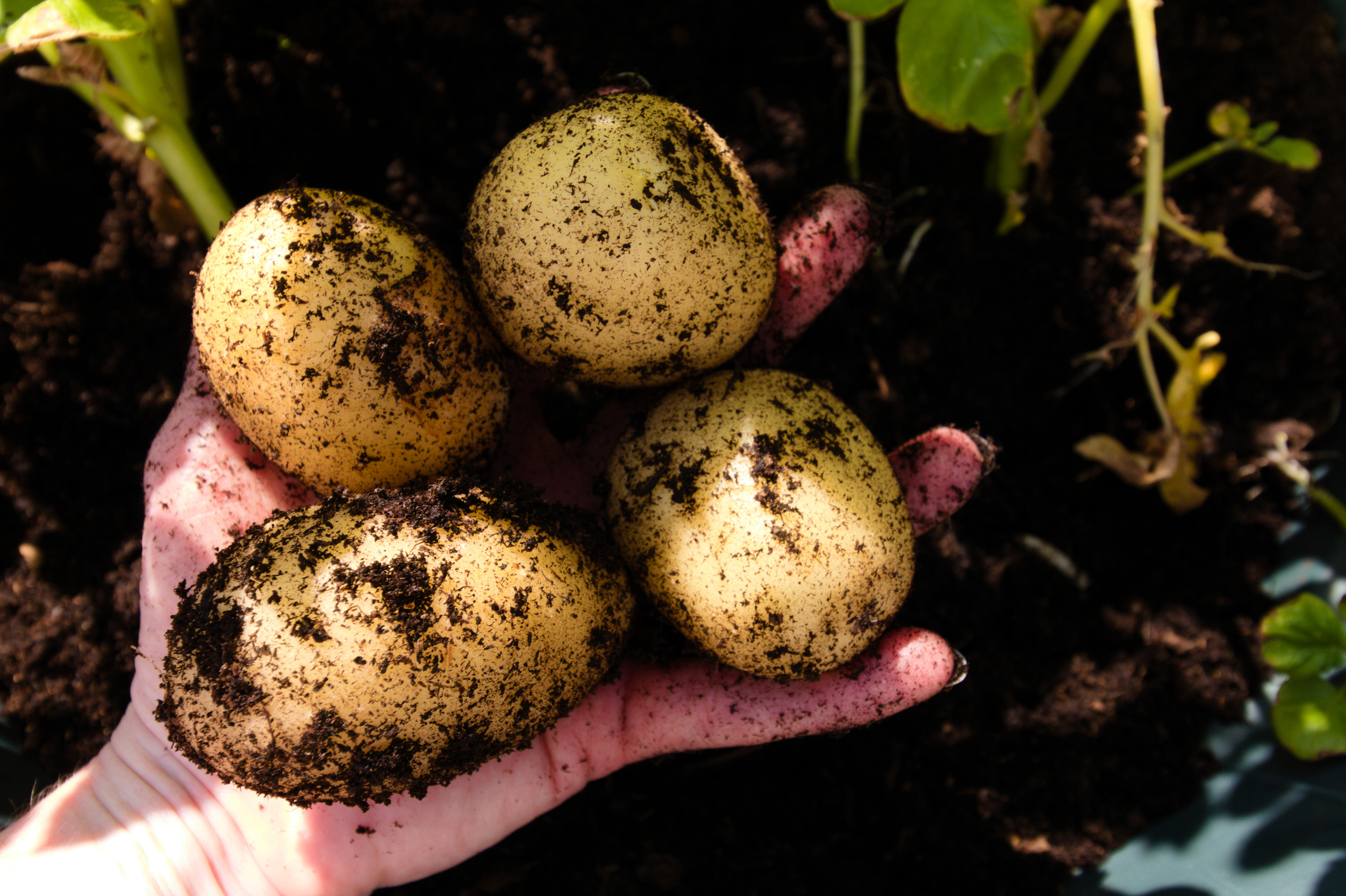How to grow potatoes
Learn how to grow potatoes and you'll have an endless supply for mashing, roasting and frying – yum!


Once you've learned how to grow potatoes, you'll wonder why you ever bought them from the supermarket in the first place. Homegrown potatoes are packed full of flavour and are perfect for all your favourite dishes, from creamy mash to crispy roasts.
You might be tempted to plant potatoes that you have sitting leftover in your cupboards, and you can do this, but your crop won't be as reliable as if you use seed potatoes. These are small potato tubers, rather than actual seeds, that are virus-free and bred to produce bumper crops. You can buy seed potatoes from most garden centres from late winter.
Before planting, you'll need to ‘chit’ your potatoes, which means letting the seed potatoes grow shoots so you get a bigger crop. Simply place the seed potatoes in trays of egg boxes with the part that has the most eyes uppermost. Stand in a cool, light spot until 1-2cm shoots form, which usually takes about six weeks.
When you come to move your potatoes outdoors, choose a sunny position with fertile, well-drained soil. You can grow most potato varieties in beds, but if you're short on space, choose early or salad varieties to grow in containers or potato bags.
What kind of potatoes can I grow?
There are lots of types and varieties of potatoes, but these can all be be classed as either early, second early or maincrop potatoes. The type of potato dictates when they're planted and therefore when they're ready to harvest.
First earlies are usually planted in late March and are ready to harvest in June or July. These are the best choice if you have limited space and well grow well in bags and containers. Try 'Annabelle'.
Second earlies, which include salad varieties, are planted in early to mid-April and are harvested from late June to August. Try 'Charlotte' or 'Cherie'.
Maincrop potatoes are planted from mid to late April and are harvesting from the end of August to October. These potatoes take up the most space to grow but are the easiest to store. Try 'Cara' or 'Setana'.
How to grow potatoes
Method:
1. Once your potatoes have been 'chit', prepare the ground by turning plenty of compost through the soil.
2. Plant with the shoots facing upwards. Plant first and second earlies about 12cm deep and 30cm apart, and leave 60cm between rows. Maincrop potatoes need to be about 40cm apart with 75cm between rows.
3. Water regularly and make sure you keep the soil weed feed.
4. As the plants grow, use a spade or hoe to cover the shoots with soil and stop the potatoes becoming green, which means you can't eat them. This process is called 'earthing up' and you just need to leave a few centimetres poking out the top of the soil. Do this regularly as the plants grow.
5. Potatoes will need a liquid fertiliser every other week, unless you mix granular fertiliser in with the compost before you plant.
6. Potatoes are ready to harvest about 10 weeks after planting.

Common problems with growing potatoes
The biggest issues when growing potatoes are slugs and potato blight. Discourage slugs by adding grit to your mulch, planting lavender or rosemary nearby, or, if all else fails, using slug pellets.
To avoid potato blight, which is a fungal disease that turns leaves yellow and causes the potatoes to rot, grow blight-resistant varieties. As soon as you spot infection in the leaves, cut the plants down as the blight won't yet have reached the tubers.
Grow potatoes in new soil each year to prevent build up of pests and diseases.
More ideas to try:
Laura has been writing about homes and gardens for 17 years. She joined Real Homes magazine in 2015 as Deputy Editor and then become Editor before taking on her current position as Content Director for brands including Country Homes & Interiors, 25 Beautiful Homes, Period Living and Style at Home. She's currently redesigning the garden of her 1960s home in Worcestershire and will eventually reinstate the swimming pool that's currently filled with mud! Outside of homes, she's a TV presenter for QVC.

